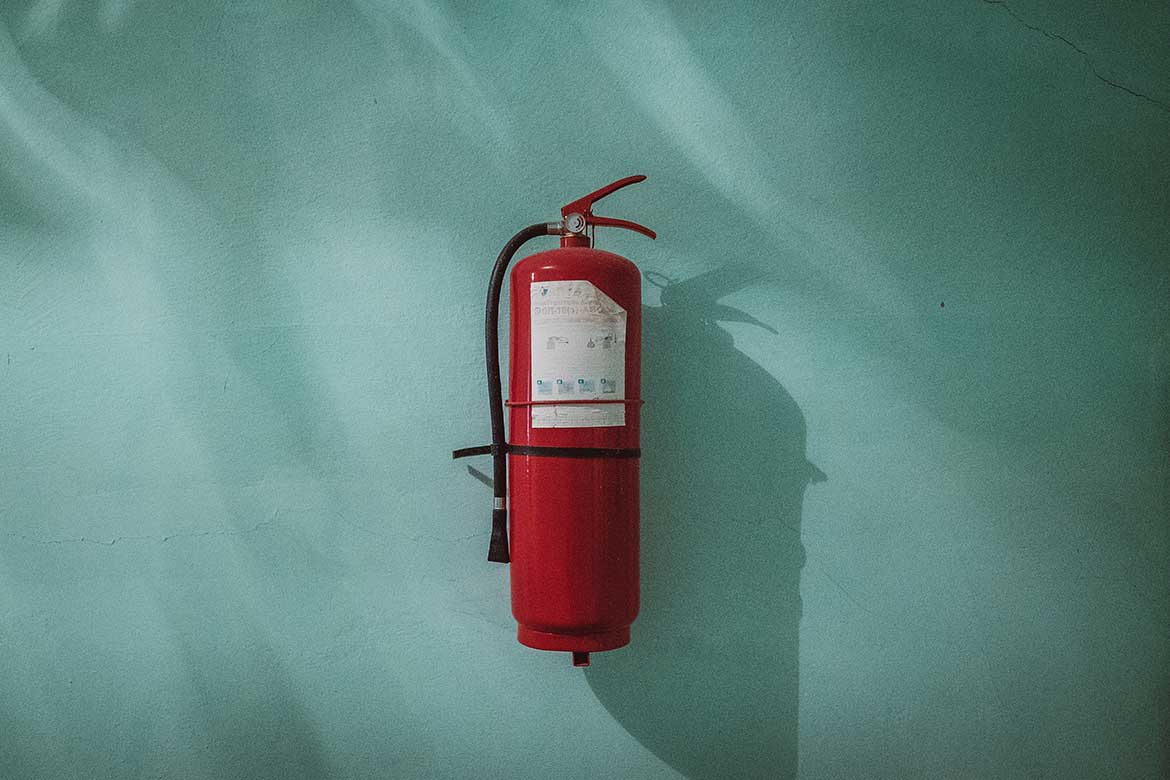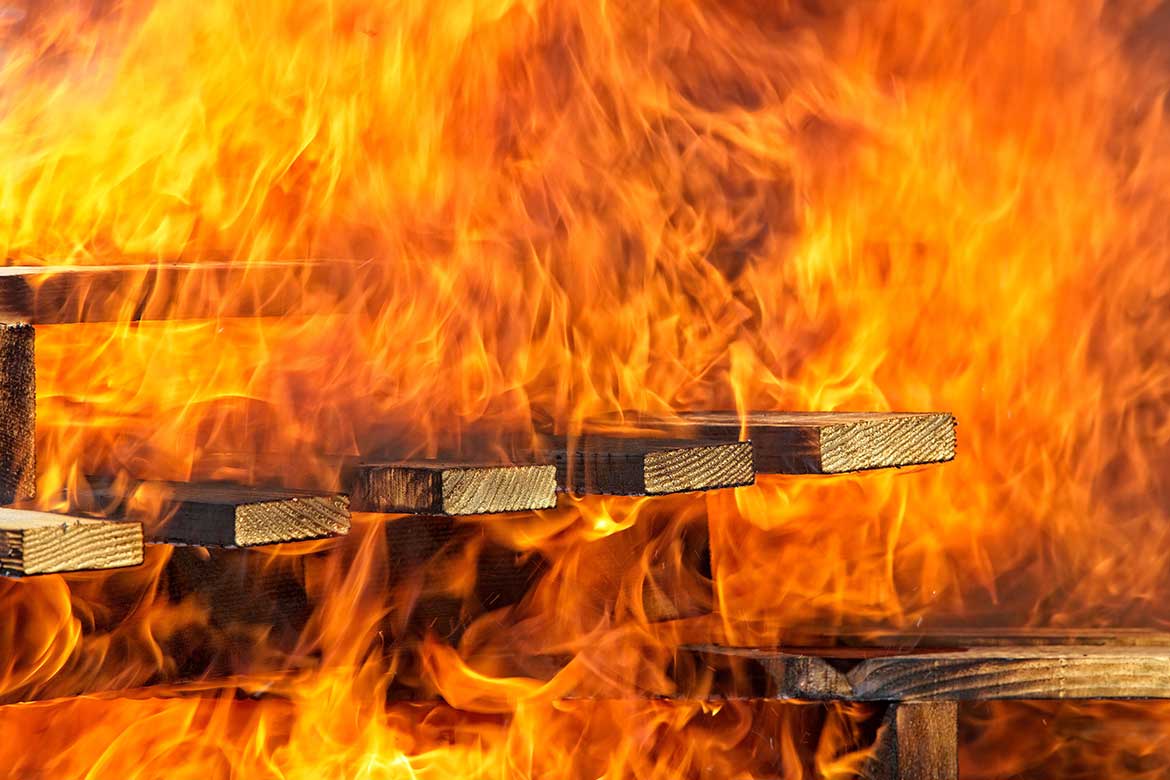3rd July, 2024
How Often Fire Extinguishers Need Checks, Services And Inspections
Fire extinguishers are an important part of your fire protection measures. While having them in place is a great start, they need to be maintained. Fire extinguishers must be checked, serviced and inspected regularly to keep them ready for action.

Fire extinguishers won't prevent a fire. But if a fire does start in your workplace, they could help you put the fire out, or at least give you the chance to escape.
Whether you put fire extinguishers in place following your fire risk assessment, or to comply with a hot works permit, they are an important part of your fire protection measures.
But they need to be maintained.
Having fire extinguishers ready and available is a great start to protecting people from fire. But it could give you a false sense of security if they are not going to work properly when needed.
To keep them ready for action, fire extinguishers need to be checked, serviced and inspected regularly.
There are different types of fire extinguishers. You probably have a few different types in your workplace. Whichever extinguishers are used, fire extinguisher checks usually follow a similar pattern:
- Monthly
- Annually
- Every 5-10 years
Regularly checking your fire extinguishers makes sense, after all, it's no good to you if when you need to use it, it doesn't perform properly, or even worse, doesn't work at all.
Download the free fire extinguisher toolbox talk to get your team up to speed.
Some checks are fairly straightforward and can be carried out visually by your team. Other more detailed inspections and services can involve internal inspections and even discharge of the extinguisher. This may need to be carried out by someone outside your business, for example by a competent technician.

Monthly Fire Extinguisher Inspections
Monthly fire extinguisher inspections can usually be carried out in-house by a member of your team. Checking extinguishers can be part of your regular fire safety procedures, along with checking access routes and testing your alarm.
You should check that:
- Fire extinguishers are located where they are supposed to be
- Fire extinguishers are easy to access and not obstructed
- Fire extinguishers are visible and not hidden away
- Fire extinguishers have not been used
- Fire extinguishers are at the correct pressure
- Fire extinguishers have not been damaged
In a busy workplace, people move things. They might temporarily store some boxes of supplies, or packaging, ready to move to a more permanent location.
And they might not realise they are blocking access to a fire extinguisher. Or hiding it from view. They may even think they have left it accessible because know where it is.
The problem is, in an emergency, people don't have time to go looking for fire extinguishers. They might go right past an extinguisher that is hidden behind a box or an open door.
Your monthly checks can make sure fire extinguishers remain in place, clearly visible and easily accessible.
Fire extinguishers don't just need to be visible, they need to be useable too.
During your monthly inspections, you can visually check extinguishers have not been used or damaged since the last inspection. Check the pin and tamper seal, along with looking for obvious signs of damage.
Use the fire extinguisher inspection checklist to carry out a visual inspection of fire extinguishers for your business.
In some cases, you might want to do this more often than monthly, especially in changing work environments like construction sites, or in heavy-traffic areas like warehouses or factories.
And what if you do find an extinguisher has been damaged or used? Well, damage can break the extinguisher, and a loss of pressure could also mean the extinguisher fails to work when you need it. So if you spot signs of a problem, make sure you get the extinguisher checked by a competent fire extinguisher engineer, who can repair or replace it if necessary.

Annual Fire Extinguisher Maintenance
Most extinguishers need annual servicing to be carried out by a competent extinguisher engineer. This is a much more detailed inspection than your monthly checks.
Annual maintenance can include:
- Safety checks on pin
- Refit or replace pin as necessary
- Checking head cap
- Checking for signs of corrosion
- Checking the hose
- Checking labels
- Weight and pressure checks
- Verify that the pressure gauge is working
- Replacement of components as necessary
- Replacement of cartridges and charges as necessary
- Wipe down
- Wall mount checks
- Sign checks
- New tamper seal
- Completion of the service label
The exact details of the service carried out by the engineer will depend on the type of fire extinguisher involved and if it is pressure or cartridge-operated.
Annual servicing is a requirement for the majority of fire extinguishers, however, it is best to check your extinguishers for the servicing schedule. Some types of fire extinguishers (e.g. P50) - although not currently as common - don't require such an in-depth annual service.
Keep a record of the fire extinguishers in your workplace and service dates with the fire extinguisher register template.
You should always follow the steps provided by the manufacturer for annual maintenance to ensure your extinguisher stays in good working order. You never know when you might need it!

5-10 Year Fire Extinguisher Servicing
You've been checking your fire extinguishers monthly and getting them serviced annually. But even with annual maintenance, fire extinguishers don't last forever.
The contents and the components of fire extinguishers age over time.
Every 5 to 10 years (depending on the extinguisher type), your fire extinguishers will need either a re-fill or a complete overhaul and replacement.
A test by discharge and refill is usually carried out every 5 years for extinguisher types:
- Water
- Foam
- Powder
And every 10 years for:
- Carbon Dioxide
To keep them fully operational extinguishers are usually re-filled at 5 years, and replaced at 10 years. Of course, this may happen sooner if the engineer spots problems with corrosion or use during annual servicing (which is why those annual checks are so important!).
Over time, newer and more effective extinguishers become available on the market. So, if it's been 10 years and your extinguishers come to the end of life, it's worth looking around for what's available today to make sure you have the most suitable type of extinguishers for your workplace.
There may be new types of fire extinguishers that perhaps weren't available when you last replaced your extinguishers.
Fire prevention and protection is an important part of health and safety management. Make sure you have a fire risk assessment in place for your business and carry out any actions needed.
This article was written by Emma at HASpod. Emma has over 10 years experience in health and safety and BSc (Hons) Construction Management. She is NEBOSH qualified and Tech IOSH.
Fire Safety Course
Take our fire safety elearning course and get your certificate today.
Fire Safety CourseRecent posts like this...

What Type Of Fire Extinguisher Should You Use On Construction Sites?
On a construction site, like any other workplace, you should always have suitable fire extinguishers readily available and a fire and emergency plan in place. But what type of fire extinguisher should you use on a construction site? Water, foam, powder, carbon dioxide, or wet chemical?
Read Post
13 Fire Prevention Tips For Construction Sites
Construction sites are at a high risk of fire, so fire prevention must be a top priority when planning and managing construction work. There are a few reasons why a fire could start on your site, but there are ways to make it less likely. Here are 13 tips for fire prevention on construction sites.
Read Post
Who Is Responsible For Completing A Fire Risk Assessment?
Fire risk assessments are a legal requirement for any building that isn't a single private dwelling. But who is responsible for completing the fire risk assessment? In this blog post, we learn about the responsible person under the Regulatory Reform (Fire Safety) Order (RRFSO).
Read Post